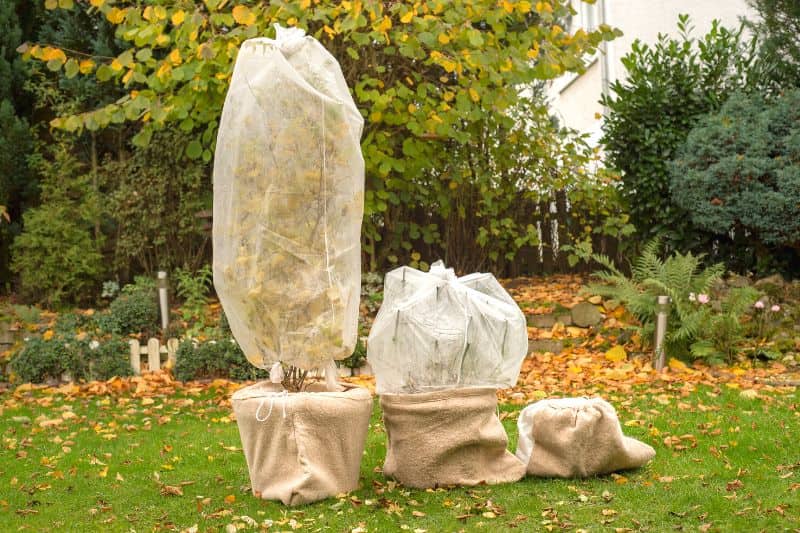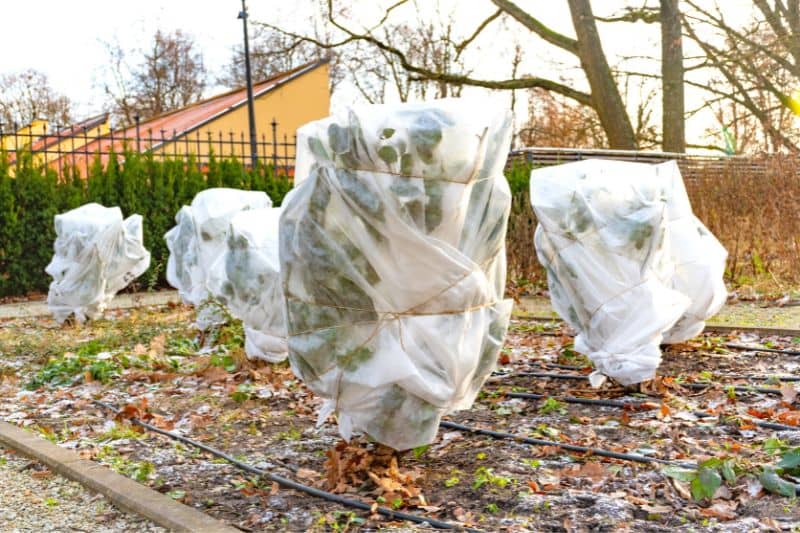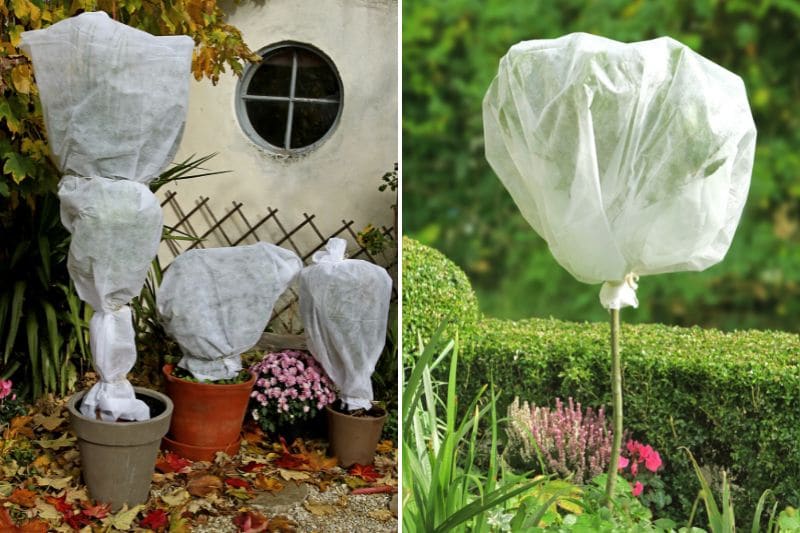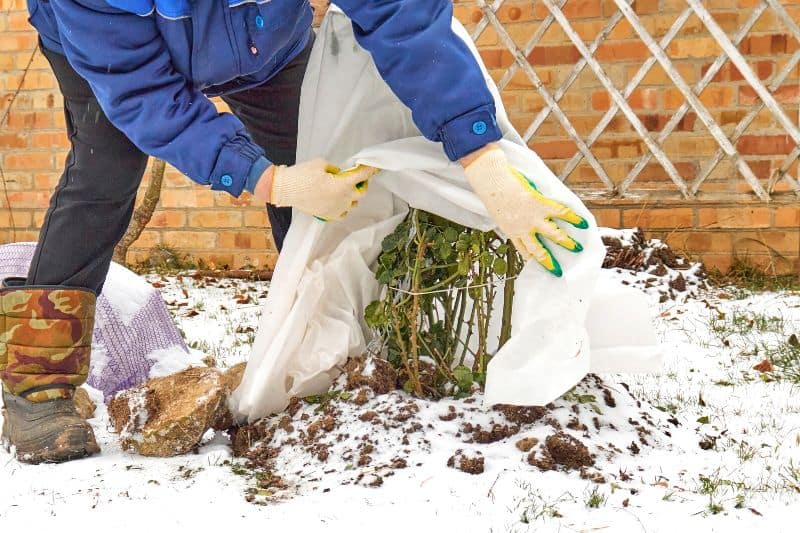When autumn arrives and days shorten, cold inevitably makes itself felt in the garden. Some tender plants, whether in pots or in the ground, can be particularly sensitive to storms, snow, frost and extreme weather conditions. It is therefore important to protect them using winter fleeces. Discover our advice to correctly install a winter fleece to shelter your plants and your bushes from damage caused by snow and cold.

When should you protect?
Big question! Climate varies from region to region and is not the same in the south as in montane areas or north of the Loire. Best is to monitor your outdoor thermometer (or install one to start) and know hardiness of your plants, that is, down to which temperature they tolerate cold. And beware, each variety has its own hardiness! Don’t hesitate to check this information on the plant page in our online nursery.
Tip: you can note these details (hardiness, whether overwintering is needed) in a small notebook to get to know your plants better and always have the information to hand.
Moreover, depending on region, the same plant may need protecting with a fleece for the whole winter in cold areas, but only for a few days during short frosts in the south. Again, best to keep an eye on the weather.
Note: a plant in a pot is more tender than one grown in the ground. Likewise, a young bush or a perennial is more sensitive to cold during its first two years after planting in the ground.

Which winter fleece to choose?
There are several types of winter fleeces available in different thicknesses and materials. Densities generally vary between 30 and 80 grams per square metre. The higher the density, the thicker and warmer the fleece. When choosing a winter fleece for your plants, consider the following factors:
Average temperature in your region
There are lightweight fleeces for milder regions and thicker fleeces for colder areas. For Mediterranean regions, a fleece between 30 and 60 grams is sufficient. For regions with the coldest winter temperatures, favour a fleece of 60 to 90 grams.
Wind resistance
If you live in an area with strong winds (Atlantic seaboard in particular), choose a wind‑resistant fleece. Thick fleeces or woven polyethylene covers are generally more wind‑resistant than lightweight or non‑woven polyethylene fleeces.
Water resistance
It is also important to choose a water‑resistant fleece, especially if you live in an area with frequent winter rain. Polyethylene fleeces are often water‑resistant. Again, woven materials will be more resistant.
UV resistance
Fleeces can be exposed to sun for long periods, so choose a fleece with good UV resistance to avoid tears and delamination.
→ Find our full range of covers and winter fleeces.

Installing a winter fleece on a potted plant
1- If possible, move potted plants against a wall, preferably facing due south, to protect them from cold winds.
2- Remove water saucers, then replace them with wooden blocks under the pot to insulate it from cold slab and improve drainage.
3- Mulch the base of the plant to protect its roots from cold, using dead leaves, hay or straw.
4- Wrap above‑ground parts, and even the trunk, with a winter fleece, taking care not to break branches.
5- Tie fleece at base of trunk or directly to the pot with strong twine.
6- In case of severe frost, also insulate pot to protect root system of your perennials and bushes with a fleece, a jute sack, cardboard, bubble wrap or an old blanket.
7- Check condition of fleece from time to time, especially after hail or a storm.

Installing a winter fleece on a plant in the ground
1- First place mulch at base of your bush or perennial to insulate its roots from cold. Use a pile of dead leaves, hay or straw. You can also mound soil around base of plant (for example roses) during cold season.
2- Protect branches and trunk by gently wrapping them with a fleece or winter cover.
3- Secure fleece in place by tying it to base of trunk with strong twine. You can also bury edge of fleece or weight it down with stones so it does not blow away.
4- Do check condition of fleece from time to time, especially after a storm or a hail shower.

Tips and advice
- Reduce or even stop watering during plant dormancy, especially in case of frosts.
- You can install stakes around your plant to fix the winter fleece to. This method is particularly useful for bushes with evergreen foliage to avoid fleece contact with leaves. This technique also prevents damage to a fragile plant.
- On sunny mild days or when spring timidly begins to return, open the winter fleece during the day to air the plant. This will also prevent it overheating too early in the season and limit development of mould due to ambient humidity. Put the fleece back in place at dusk.
When to remove a winter fleece?
You can remove covers and winter fleeces in spring as soon as frost risk has passed. Generally from April for southern France and after mid‑May for colder regions.
→ Also discover our article: 10 plants to protect in winter and how to install a forcing tunnel in the vegetable garden?
































Comments